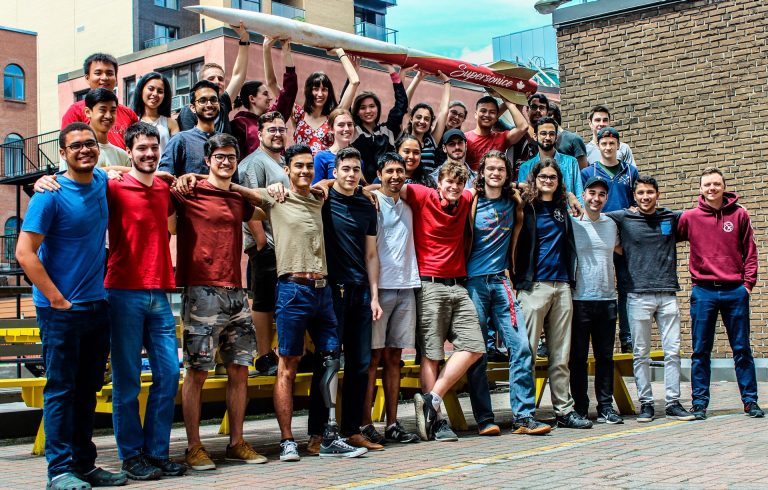Concordians are finalists in a major intercollegiate space engineering competition

Oleg Khalimonov is a rocketry lead with Space Concordia’s executive team.
Last summer, Space Concordia entered the Base 11 Space Challenge, the most intense intercollegiate engineering competition in history. It’s a race to build the first civilian liquid-fuelled rocket to surpass 100 km in altitude and reach outer space.
Did I mention that first prize is US$1 million?
In February, we were asked to submit a preliminary design report to the judges of the competition for a chance to win up to $25,000 to support the project.
We wrote a document that was over 585 pages long! It detailed every single design, decision, analysis and trade study.
Two weeks ago, we got a call. We had made it into the top five of 35! We were invited to make a presentation outlining the business portion of our project at Caltech.
Two days ago we gave our presentation … and blew everyone away!
We walked off from that presentation with a US$15,000 second-place prize for our report and a surprise award from Dassault, one of the competition sponsors, for the early adoption of their software during the competition.
Standing in one of the best engineering universities in the wold, and competing with the top universities on the continent, was quite a feeling!
The attendees were shocked to see how a school that not many of them had even heard of was outshining everyone in the room.
The judges were amazed by our work ethic, preparedness, outreach and inclusiveness. Other teams were floored by the extensiveness and quality of our technical report.
The space race continues
We have been working tirelessly for the past 16 months on this project. If we are successful we will be the first students to build a rocket to reach space, and we will have built the most powerful amateur rocket motor in history.
We are a small team and we are all working very hard to achieve this goal. We are currently completing our rocket engine test stand, and are aiming to fire the engine before the end of the summer.
Humble origins, big aspirations
Space Concordia was founded 10 years ago with their first entry, Consat-1, in the Canadian Satellite Design Challenge (CSDC).
With less than 10 members, the team designed and built Concordia’s first CubeSat, and won first place at the CSDC. While the competition promised a launch as the first-place prize, money was an issue and, unfortunately, the satellite was grounded.
Over the past 10 years, Space Concordia has grown considerably. The space society now encompasses over 150 members from all four faculties in its three divisions: Spacecraft, Robotics and Rocketry.
The Rocketry Division of Space Concordia is focusing all its time, energy and skills into producing our first-ever propulsion system, and the greatest project in Concordia’s history.
With passion and perseverance, we aim to complete Space Concordia’s first suborbital launch vehicle for lift-off in 2020. We want to deliver Consat-1 past the Karman Line, and finally give it a taste of space.
After all, this is Space Concordia. Not high-altitude Concordia!
Watch a video of Supersonice, Space Concordia’s first supersonic rocket and the team’s first entry in the Intercollegiate Rocket Engineering Competition (IREC) advanced category. The rocket placed first in the advanced category and in the Space Dynamics Payload Challenge for its dynamic fluid slosh experiment.
Inspired by Space Concordia? You can contribute to their ongoing mission: to boldly go where no student team has gone before…


